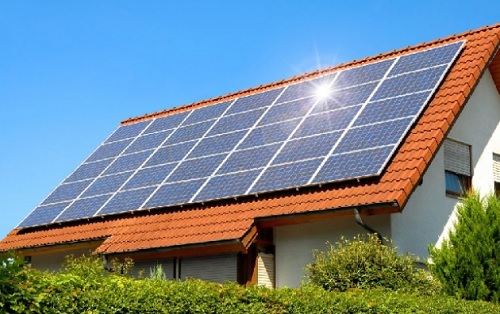Living in an Edmonton Energy Efficient Homes
What is a Net Zero Home
Net Zero Homes produce as much clean energy as they consume. They are up to 80% more energy-efficient than typical homes and use renewable energy systems to produce the remaining energy they need. Every part of the house works together to provide consistent temperatures throughout, prevent drafts, and filter indoor air to reduce dust and allergens. The result: exceptional energy performance and the ultimate in comfort – a home at the forefront of sustainability. It all adds up to a better living experience. The Blatchford community in Edmonton is leading the way on net zero homes.
Why choose a Net Zero Home?
With a Net Zero property, your utility bills will fall to an all-time low and stay low all year round, protects you from future increases in energy prices, and over time, that could be a very big deal. Net zero homes are built to higher standards than conventional new homes with high performance, warm windows, and better-insulated walls and roofs. These dwellings produces as much energy as it consumes and is up to 80% more energy-efficient than a home built to conventional standards with a built-in filtered fresh air system that reduces allergens and asthma triggers, such as dust, pollen, and outdoor air pollution.

Parts of a Net Zero Home
Brighter Lighting
- If you improve your home’s overall lighting by installing larger windows and skylights, getting rid of the heavy drapes or curtains altogether, and painting the interior with brighter colors, it will make your home brighter and reduce the need of using electrical bulbs.
Types of Windows
- Most of the heat loss in a building escapes through the windows. With this in mind, good windows are critical in a Net Zero Energy home. Triple pane windows with a Low-E film, Argon insulating gas, and insulating spacers between panes are a good choice. In a northern climate, the glazing should be optimized to encourage solar energy to flow into the home while insulating to reduce heat loss to the outdoors. High-quality frames with certified sealing systems are recommended.
Solar Electricity
- Solar-electric systems use photovoltaic modules to generate electricity. The arrays can be grid-tied, meaning that the home will provide energy to the electrical grid during the day, while drawing from the electrical grid during the evenings or when the home needs more energy than can be generated. These Solar photovoltaic systems can also be connected to batteries to store excess energy. This opens up the opportunity to disconnect from the electric grid and eliminates the costs of line service charges from utility companies.
Window Placing
- South-facing windows allow more energy from the sun to be absorbed by the thermal mass of the concrete floor. This thermal mass gathers the heat energy in the daytime, releasing it in the nighttime hours. South-facing backyards in Edmonton have always been a hot item, now they are in more of a demand with Net Zero Energy homes.
Insulation Products
- There are several insulation products used to insulate the Net Zero Energy homes. A few of them are the expanded polystyrene which is often used under the concrete floor in the basement. A combination of insulation materials contributes to a well-insulated Net Zero Energy home. Some of these materials are wall-time spray foam, compressed cellulose which is made predominantly from post-consumer recycled paper, and glass fiber batt insulation.
Geothermal Systems
- Geothermal heating is a Ground Source Heat Pump or a GSHP and requires a higher initial investment, but with proper engineering and the right soil conditions, it can run at approximately 250% efficiency leading to long-term energy savings.
Air Source Heat Pump
- An air-source heat pump is a heating option used in Net Zero Energy homes which are designed for cold weather climates like here in Edmonton Alberta. Efficiencies range from 100%-400% depending on the outdoor temperature. The Belgravia Green home in Edmonton is an example of a Net Zero Energy home heated by an air source heat pump.
The Ventilation
- High efficient heat recovery ventilators or HRV are also very important in a Net Zero Energy home that uses low electricity due to its commutated motors. These units provide fresh air by exchanging stale indoor air with fresh outdoor air. This allows the home to be both extremely energy efficient and a healthy environment.
- Replace household appliances that can drain a lot of power by choosing energy-star-rated ones, replace water wasters with low flush toilets and low flow showerheads & faucets and replace bulbs with energy-efficient bulbs.
Where to find an energy-efficient homes in Edmonton
Most new builds in Edmonton are now energy-efficient homes which have arose from high demand in our city. This trend will continue with the builders and the increasing cost of heating our properties.The Blatchford community is an up-and-coming community near the downtown core that focuses on the environment and saving our natural resources which has been in play for several years now. There are also several homes in both the University and Bonnie Doon areas where special attention has been given to mature houses making these homes net zero properties. As you drive by our older "luxury neighborhoods, you will notice additional solar panels on the roofs as time passes.
If you own a net-zero or energy-efficient home in Edmonton and would like to sell, please contact us. We have buyers waiting for houses like yours.

